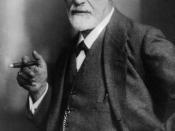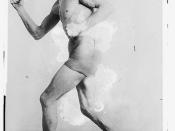Evan S. Smith wrote a book called "Writing Television Sitcoms". The book gives instructions on how to get a job as a writer of situation comedies. It also advises on what to write when writing a sitcom. This book is a great resource for anyone wanting to become a writer. It explains things like mechanics of laughter, story premise, comedy in dialog and action, and proper grammar for a script.
The first part deals with why people laugh. Sigmund Freud says that Laughter is a discharge of psychical energy. Physiologists such as Herbert Spencer say that nervous excitation brings the muscle movement of laughter. Evolutionists believe that laughter has to do with early mans' reaction to a hostile threat. Smith points out that all the theories have to with tension. Comedy comes from the release of tension.
Consistency is very important. Each show uses a certain type of comedy.
The comedy is of the show might by slapstick, dry wit, or oddball. Switching types from scene to scene confuses the audience. There is a phrase called "writer's hand." It is used when a line seems unnatural for a character. If an episode of "Friends," had Joey making a joke about Shakespeare, it would seem unnatural. It is as if someone else came up with the joke and he is repeating it.
The book gives summaries of different predicaments the characters in a sitcom can go through. These predicaments help to create tension. Smith has examples of shows to illustrate each plot point. One is called "Time Bomb." This is where a character has an impossible deadline to meet. When he or she tries to finish to project hilarity ensues.
There is a plot devise called "The Misunderstanding." One on the characters hears a conversation and acts on the misinterpreted...


